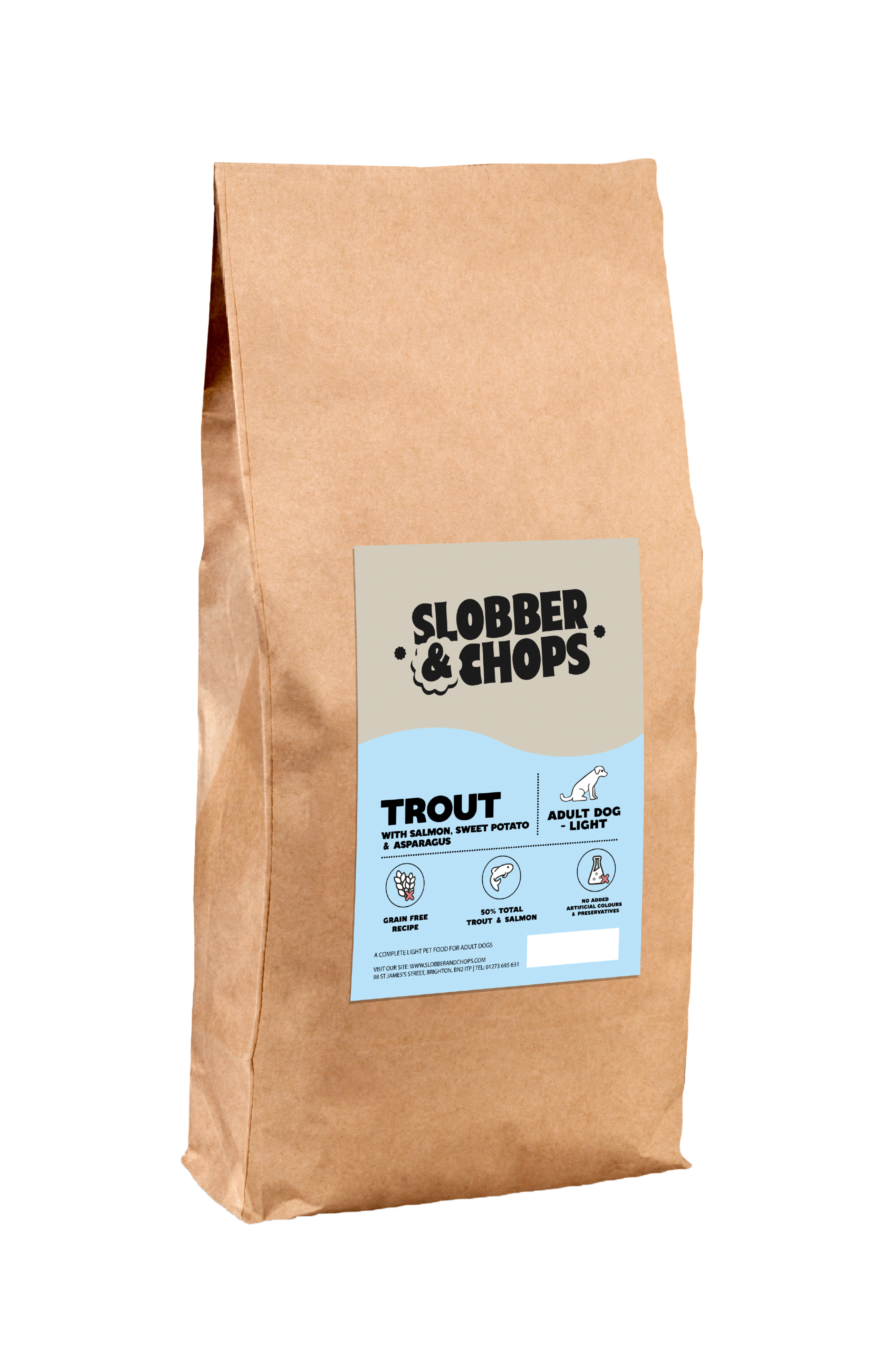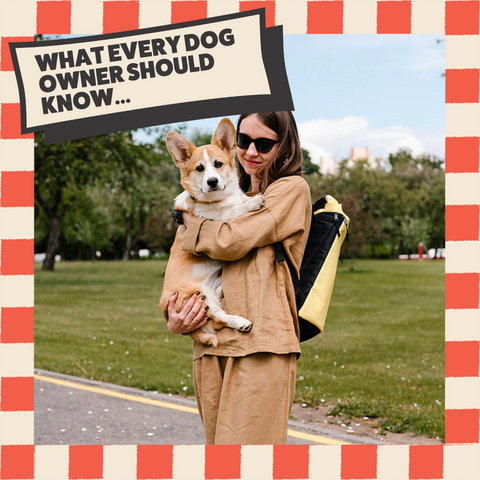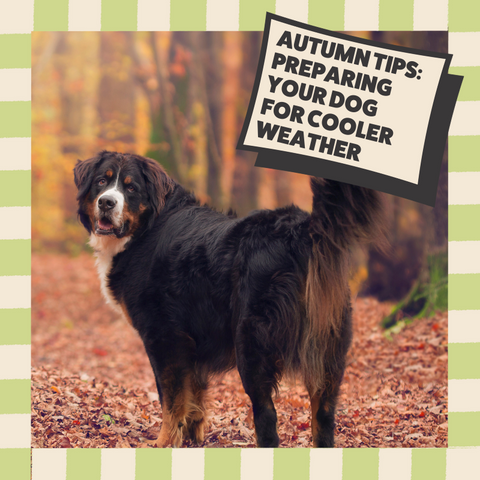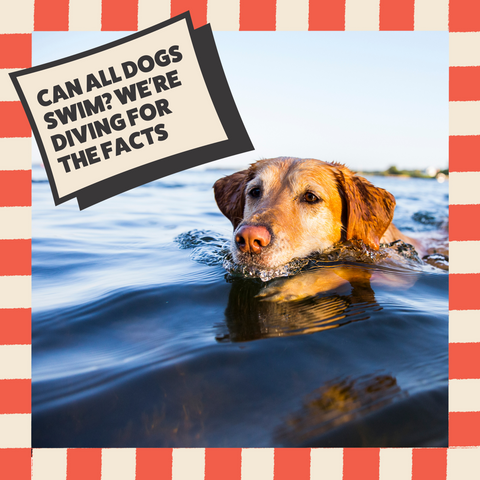Light Dog Food | How To Pick A Diet Dog Food | Healthy Dry Dog Foods
| Bone Idol Dog Food, Guides & Resources, Health & Wellbeing
A Lighter Way to Feed Your Dog
The world of dog food has evolved and with this change comes choice. We are here to help you pick the best light or diet dog food so you can feed your dog a full and complete meal with less calories and all the taste!
Gone are the days when choosing a dog food was a case of choosing between a tin of food or a bag of biscuits. Nowadays there are many, many brands of commercially available dog foods on pet shop shelves, all professing to be the most suitable choice for your dog. Deciding which food to choose can be a daunting process for the dog’s owner at the best of times, when your dog is carrying more weight than is healthy then you need a ‘light’ dog food.
Sometimes for various reasons, our dogs may carry a little extra weight, be it from increasing age, injury, restricted exercise, or medical conditions to name a few. What matters is feeding a healthy balanced and complete food. So, to help you work out what is a healthy ‘diet’ option for you we have pulled together some information and advice to help you.
The Dog Food Basics
Essentially there are two main ways of classifying dog foods to make the decision-making process a little more step-by-step. The first classification concerns dietary provision. Essentially this whether the product on its own and at appropriate servings contains everything your dog needs. Dog food in the UK is either:
Complete dog food: This comes in several forms (wet, dry and raw being the major categories). For a food to be classified as ‘complete’ it must contain every single nutrient necessary to keep a dog fit and healthy and should be capable of being the dog’s sole source of food for an extended period. We always recommend looking for the words “balanced and complete” on the packaging or information for a complete dog food.
Complementary dog food: These don’t contain the correct balance or the full range of nutrients required when fed alone and therefore need to be fed alongside other supplementary dog foods.
A high-quality complete food is generally the most convenient way of feeding your dog. As always, when choosing the most appropriate diet for your dog, always speak to your canine nutritionist, vet or veterinary nurse to ensure you are supplying your dog with all the nutrients they need.
The second classification of dog foods is about the ‘style’ of dog food. Primarily these are wet, dry or raw.
Dry dog food includes traditional extrusion, modern extrusion and ‘freshtrusion’, baked, air-dried, freeze-dried and cold pressed.
Wet dog food comes most frequently as pates, pouches, tins, tetra packs and trays.
Raw dog food is always uncooked but can be frozen or refrigerated
It’s worth noting here that not all dog foods are equal in quality so please take some time to investigate the company making your dog food. Consider where they source their ingredients, what quality these ingredients are, who formulates the recipes and the nutritional availability of the dog food.
Certain health conditions may mean that certain styles of dog foods are not suitable for your dog in which case, please speak to your vet. For a full and independent guide on how to choose the right dog food for you and your dog, check out this in-depth article written by independent vet, Elaine McNamara exclusively for Slobber & Chops.
Our dogs’ diet can have a massive impact on their health and wellbeing. Just like their owners, our pets can sometimes experience additional pounds creeping on the scales. All dogs can be prone to weight gain and although a little weight gain is to be expected as your pooch ages, it’s very important to manage your dog’s waistline and keep the pup at an ideal weight as there are many serious and long-term health complications which can present themselves as a result of obesity. Arthritis, heart disease and diabetes are just a couple of examples.
If you are concerned about whether or not your dog is under or overweight, always consult your vet. However, a quick way to check at home is to feel around their ribs and spine. On a healthy-weight dog, you should be able to find the ribcage easily as there will only be a thin layer of fat separating the skin from the bones. If it’s hard to find, your dog’s ribcage, he likely needs to shed a few pounds.
As with humans, canine weight gain occurs when the number of calories going in is greater than the amount of calories being expended by the dog. It’s really that simple! To prevent weight gain or to achieve weight loss, your dog must either eat fewer calories or burn more. A fundamental part of any weight loss programme should be combining healthy feeding with plenty of exercise to burn calories, keep your dog in shape and provide them with mental stimulation. As is often the case, prevention is heaps better than cure.
The most obvious first step to take if you want to reduce your dog’s calorific intake is to reduce the amount of treats and table scraps that you feed. Treats are often high in fat and sugar and many owners are in a state of denial about what we feed our beloved four-legged companions. If you consider biscuits as an example, giving your little dog one human biscuit could be the calorie equivalent of you eating half a packet!
If you feel that your dog needs to lose a little weight, you could also consider changing to a lower-calorie or diet dog food.
Light or diet dog foods contain fewer calories to help with weight loss. There are now dozens of light dog food brands sold online and in shops and this vast array of different options can make the shopping decision a tricky one.
"Light dog food, light dry dog food, light food for sick dogs, light wet dog food, diet dog food, grain free light dog food, weight loss dog food for older dogs, low-calorie dog food, weight control dog food"… Call it what you like, but all this information presenting itself in adverts and on labels can cause the dog owner’s head to spin.
When choosing a light or diet dog food, take a careful look at the labelling as manufacturers sometimes reduce the calorific value of the dog food by substituting high-quality meat (which is a high calorie) with lower quality, low-quality fillers. As a general rule, when feeding an overweight dog, try to look for food that has an above-average protein content with below-average fat and calorie content.
Low-calorie diet food may contain low GI carbohydrates which slowly release energy. At Slobber & Chops, we use sweet potato in all our dog food rather than grains. This low GI ingredient has many additional health benefits while also providing a great source of dietary fibre. We love sweet potato so much that we have a whole page about it.
If you are looking to reduce your dog’s calorie intake, a homemade alternative to diet food is to feed a lesser amount of your usual, high-quality pet food and simply top it up with some vegetables you’ve cooked yourself.
If your dog is going to try to shed a few pounds, try to make sure that their weight loss is gradual and consistent because losing too much weight too quickly can lead to problems such as muscle wastage.
Pancreatitis in Dogs
The two major functions of a dog’s pancreas are the secretion of hormones to control blood sugar and the production and release of enzymes to assist the digestion of carbohydrates, proteins and fats.
Pancreatitis is a serious condition where the pancreas becomes inflamed. In a healthy dog, enzymes released by the pancreas are only activated when they reach the small intestine. During an episode of pancreatitis, the enzymes activate on release causing damage to the pancreas and the surrounding abdominal area.
Classic signs of pancreatitis in dogs include repeated vomiting, diarrhoea, loss of appetite, weight loss, dehydration, lethargy and abdominal pain (especially after eating). It is crucial that if you suspect your dog is suffering from pancreatitis you seek urgent veterinary assistance.
There are several possible causes and risk factors that can bring on an attack of pancreatitis but a high-fat diet is a major cause, especially when a dog consumes a large amount of fatty food in one go. Interestingly, acute pancreatitis is most prevalent at Christmas when dogs are given large amounts of fatty table scraps.
Pancreatitis can affect any dog, but it is more common in females and older, inactive and overweight dogs. Breeds that are more prone to pancreatitis include Cocker Spaniels, Miniature Schnauzers and Miniature Poodles.
Pancreatitis is described as being either acute or chronic. Acute pancreatitis is a one-off episode of pancreatic inflammation whereas chronic pancreatitis is inflammation that continues over a longer period.
Treatment for acute cases of pancreatitis will usually involve some form of medication to aid symptoms and the vet may advise withholding food and fluids for a couple of days to give the pancreas time to rest and recover and to slow the production of digestive enzymes. Following a bout of pancreatitis your vet may recommend a prescription or low-fat diet. Whilst there are plentiful specialist prescription diets commercially available, there are also many regular foods that will fulfil the same nutritional criteria at a lower price. The main dietary aim for any dog recovering from pancreatitis will be to make life easy for the pancreas.
When considering which food to purchase to manage cases of pancreatitis, the following are considerations:
Low fat: One of the pancreas' principal roles is the breakdown of fats, so the easiest way to ease its workload is to feed a low-fat diet.
Highly digestible: Foods that are easily digested are especially important for dogs with pancreatitis.
Moderate protein: Owners whose dogs suffer from pancreatitis may also be advised to avoid foods with high protein levels as another important function of the pancreas is the digestion of proteins. The best form of protein for dogs is derived from good-quality, named meat ingredients.
Low carbohydrate: Reducing the amount of carbohydrates in the diet will also take the pressure off the pancreas so foods with high percentages of NFE carbohydrate or starchy fillers should be avoided. Such foods include white potato, white rice, maize and tapioca.
No added sugar: As with human food, added sugar in dog foods is a no-no but for dogs with pancreatitis it is especially important to avoid sugar in the diet.
Your vet should be able to give you some pointers on what to look for in an ideal food. In addition, please call us at our shop on 01273 695391 during regular business hours to discuss if our light food is right for your dog.
Reduced Fat or Low Fat Dog Food
Low-fat dog food often contains leaner sources of protein (such as fish, chicken or turkey) as well as having a higher vegetable content which results in it being a lower-calorie, high-fibre food. A reduced fat diet may be beneficial for dogs with lower activity levels, those with large appetites or those suffering from health conditions such as Inflammatory Bowel Disease (IBD) or pancreatitis.
However, if your dog is carrying extra weight, or if the pooch has a health condition which makes maintaining a healthy weight difficult, a high-quality low-fat dog food such as the Bone Idol Light Trout, Salmon & Garden Vegetables recipe could be the choice for you. Trout is naturally rich in omega-3 essential fatty acids which may help to support skin and coat condition and additionally may help to maintain healthy joints. It contains a variety of nutritious garden vegetables such as asparagus which is rich in vitamins A, C and K plus folic acid, all contributing to general health and wellbeing. Our Light food also includes provitamin L-Carnitine which can help prevent muscle wastage in older dogs as well as glucosamine and chondroitin which are proven to promote joint health, again, which is vital for older dogs.
If your dog is recovering from an illness or is malnourished, a low-fat content diet may not be appropriate. As always, consult your vet, vet nurse or canine nutritionist for advice on what diet is best for your pet.
Prescription Dog Food
When it comes to prescription diets, it is always worth a little investigation and full understanding of what it is that your dog needs from this food and what is special about the food. There are some key prescription diets which are medicated and unlike any food, you can buy in the commercial market, like speciality urinary products for kidney problems.
However, there are also some foods sold under this umbrella that do not contain a ‘prescribed medication’ or formula. Always discuss this with your vet and a qualified dog nutritionist. They can help you understand if you are paying for a medical brand or for an actual ‘prescription diet’. It can’t be disputed that many prescription foods contain ingredients to help with certain health conditions, but so do many high-quality dog foods.
There are prescription diets for heart, kidney and joint problems, dogs with sensitive stomachs and dogs who require weight loss or weight management. There are plenty of non-prescription foods that could fulfil such criteria just as satisfactorily, if not better when researched properly and fed correctly.
If your vet nurse, vet or canine nutritionist suggests a prescription diet and has a good reason for the recommendation then all is well and good, but be aware that there could be more cost-effective options.
Why Slobber & Chops Healthy Dry Dog Food?
When we were looking to create the best 'light' dog food, we knew we wanted to use the same ethically-sourced, natural, fresh and raw ingredients used in all our Slobber & Chops Healthy Dry dog food as well as including healthy fatty acids in a our grain-free recipe in the range.
When feeding your dog, a low-fat or light dog food for weight loss, this should also be done in conjunction with regular and appropriate exercise for your breed of dog and their physical capabilities. As always, if in any doubt, please discuss this with your vet.
Slobber & Chops healthy dog food range also includes Senior dog food for older dogs and Small Bite recipes for toy and miniature breeds. Every recipe is vet-approved and 100% balanced and complete. So you can feed your dog with confidence that every meal is a healthy one. With pre and pro-biotics, FOS and MOS in every recipe, our dry dog food helps to promote healthy digestion and gastrointestinal health too.
Slobber & Chops Light Dog Food








